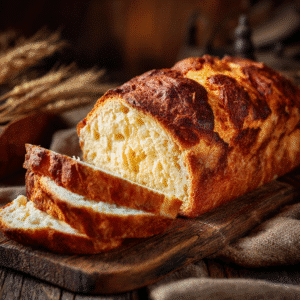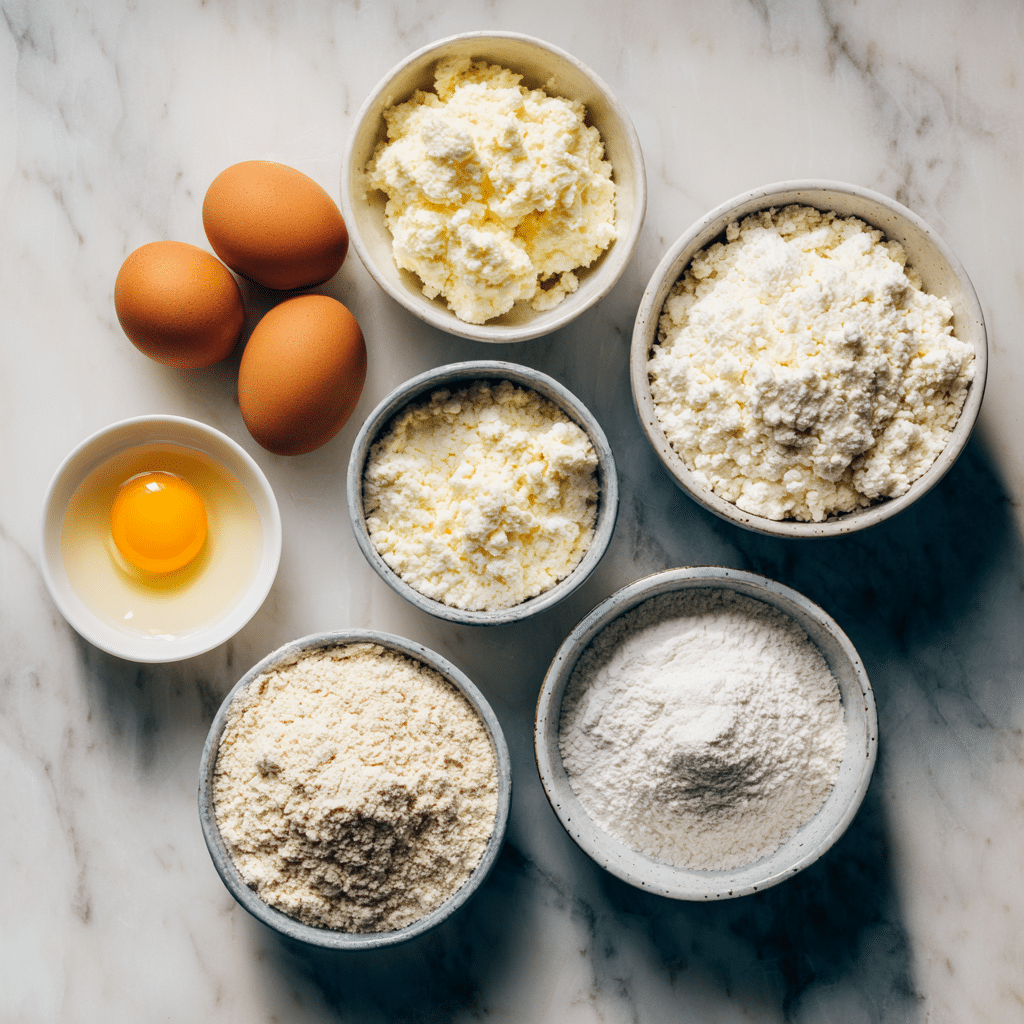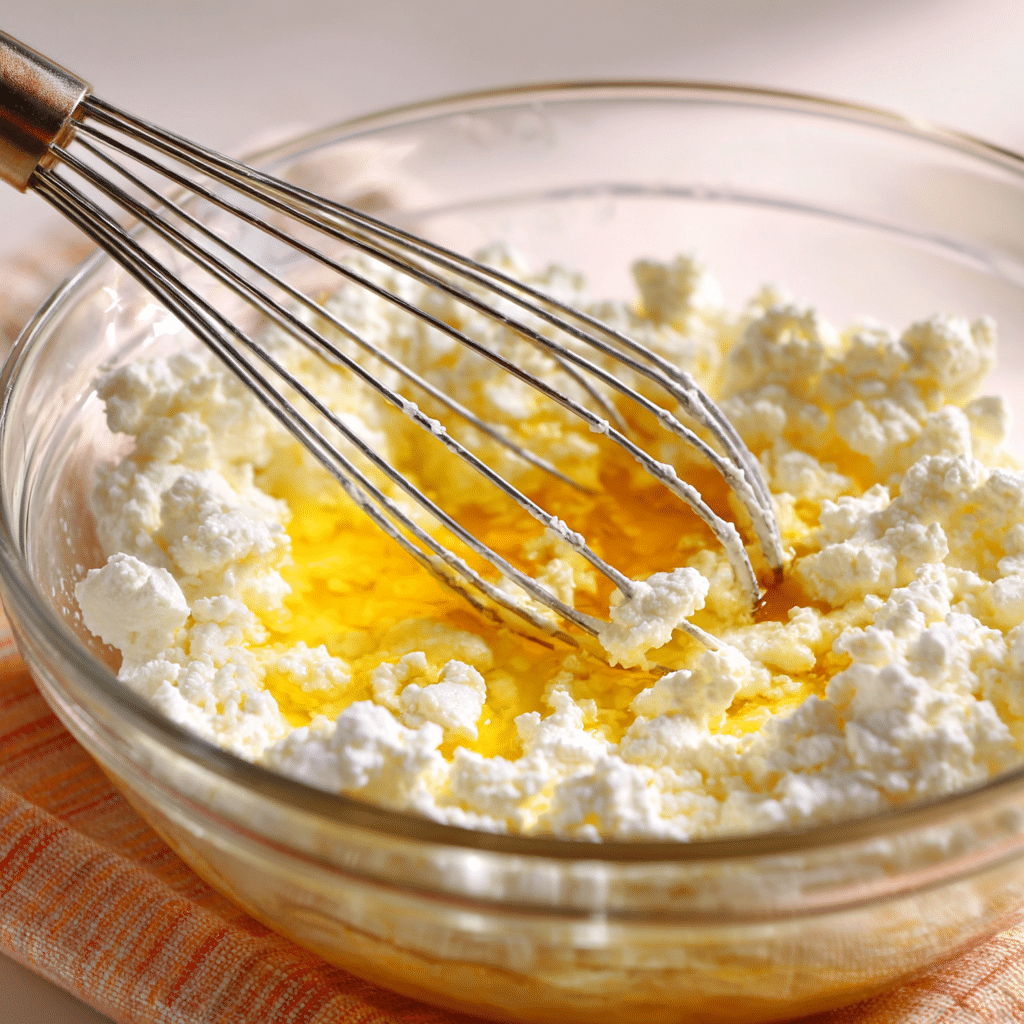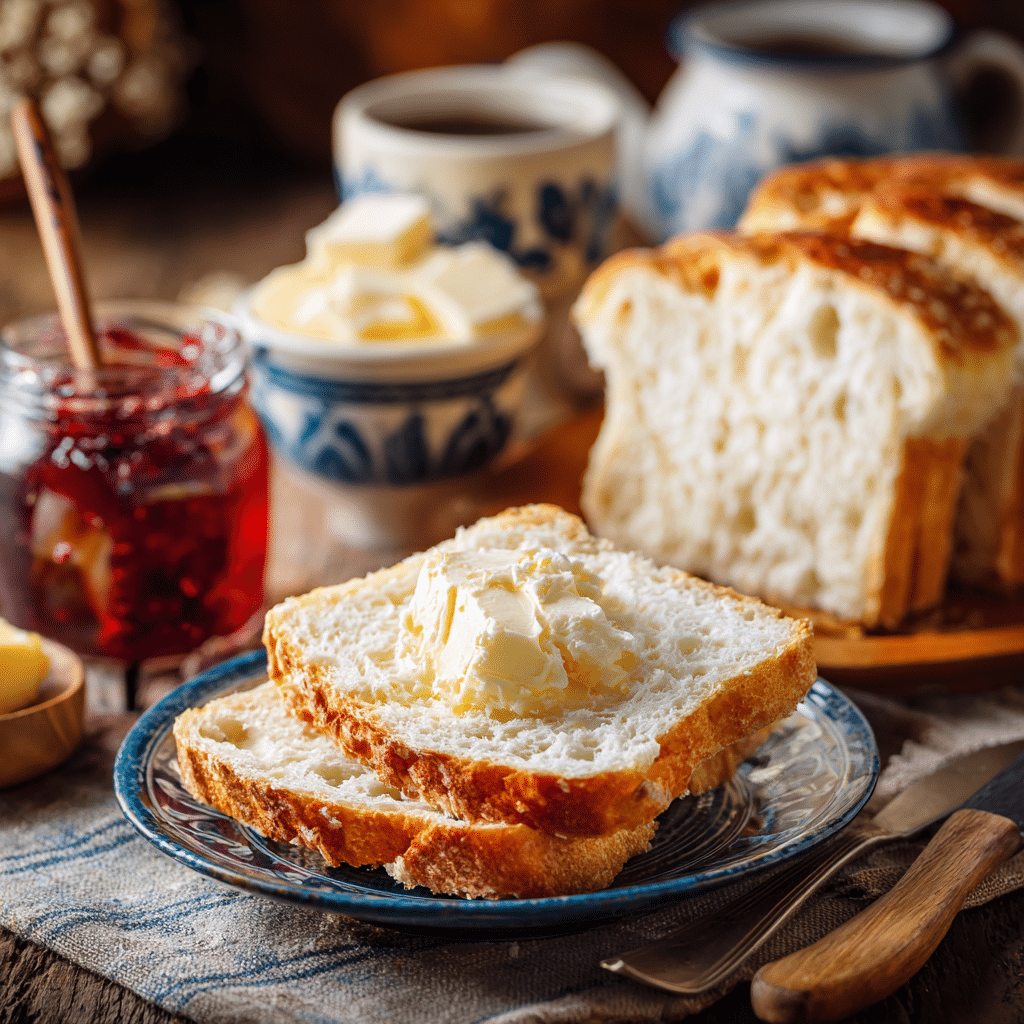Cottage cheese bread is one of those brilliant recipes that feels like a cozy secret. It’s fluffy, satisfying, and sneaks in a good boost of protein all without gluten. Whether you’re gluten sensitive or just exploring wholesome baking options, this bread offers a soft texture and tangy richness that’s hard to resist. In this article, we’ll walk through my go to cottage cheese bread recipe, explore ingredient tips, baking secrets, and ways to adapt it for different dietary needs. You’ll also discover why this recipe is a favorite for anyone chasing both flavor and nutrition in a single slice.
Table of Contents
Why Cottage Cheese Bread is a Game-Changer
A Tuscan Twist on an American Classic
I still remember the first time I folded cottage cheese into a bread dough. It wasn’t a typical ingredient in the kitchens I trained in back in Tuscany pane Toscano is as straightforward as bread gets: flour, yeast, water, and salt. But after my gluten intolerance diagnosis, I had to rethink everything. That included finding smart swaps that added structure and taste without wheat. Cottage cheese became a surprise star. It’s creamy, full of protein, and binds beautifully with gluten-free flours like oat or almond. It brings that slight tang that reminds me of rustic ricotta bakes we used to enjoy on Sundays.
In my first few attempts, I was skeptical. Cheese in bread? But when it came out of the oven light golden, slightly puffed, and with a smell that danced between sourdough and pancakes I was hooked. That’s when I knew this wasn’t just a workaround. This was a keeper.
What Makes Cottage Cheese Bread So Special?
This isn’t your average gluten-free loaf. The addition of cottage cheese gives it a pillowy texture without needing gums or dozens of starches. The result? A naturally moist interior that stays fresh longer and doesn’t crumble like so many store-bought options. It’s also protein rich, making it ideal for anyone wanting to add more nutrition to their meals. Every slice offers staying power, whether you use it for toast, sandwiches, or savory French toast.
On top of that, it’s incredibly simple. Most recipes call for fewer than 10 ingredients, and prep time clocks in under 10 minutes. That’s a rare find in gluten-free baking. And when you compare it with something like soft homemade gluten-free bread or no-knead gluten-free bread, the cottage cheese version holds its own—and then some.

Gluten-Free Cottage Cheese Bread
Ingredients
- 1 cup full-fat or low-fat cottage cheese
- 3 large eggs
- 1 1/4 cups gluten-free flour blend with xanthan gum
- 2 teaspoons baking powder
- 1/2 teaspoon salt
- Optional: 1/2 teaspoon garlic powder or chopped chives
- Optional: 1/4 cup shredded cheddar or Parmesan cheese
Instructions
- Preheat oven to 350°F (175°C) and line a loaf pan with parchment paper.
- Blend cottage cheese, eggs, and any optional seasonings until smooth in a blender or food processor.
- In a large bowl, whisk together the gluten-free flour, baking powder, and salt.
- Pour the wet mixture into the dry and stir until combined into a thick, spreadable batter. Do not overmix.
- Transfer the batter into the prepared loaf pan and smooth the top with a spatula.
- Bake for 40–45 minutes until golden brown and a toothpick inserted in the center comes out clean.
- Cool in the pan for 10 minutes, then transfer to a wire rack to cool completely before slicing.
Notes
Nutrition
Ingredients and Easy Method for Cottage Cheese Bread
Simple Ingredients, Real Flavor
One of the best things about cottage cheese bread is that it doesn’t require fancy ingredients. If you have a tub of cottage cheese in your fridge and some basic pantry staples, you’re halfway there. Here’s what you’ll need for a classic version:
- Cottage cheese: Use full-fat for a richer loaf or low-fat if you prefer it lighter. It’s the star ingredient and adds both moisture and protein.
- Eggs: Help bind the dough and give it structure.
- Gluten-free flour blend: A 1:1 baking blend works well, or you can mix your own with oat flour and almond flour.
- Baking powder: Gives the bread its lift.
- Salt: Enhances flavor.
- Optional add-ins: Garlic powder, chopped chives, shredded cheese, or even a touch of honey.
Compared to recipes like my gluten-free zucchini bread or banana oat protein pancake bites, this loaf is more savory and flexible, perfect for brunch or lunch.
Foolproof Steps to Make It at Home
Here’s the step-by-step method I use weekly. It takes just about an hour from start to finish no kneading, no proofing.
- Preheat your oven to 350°F (175°C). Line a loaf pan with parchment paper.
- Blend the cottage cheese, eggs, and any optional spices in a blender or food processor until smooth.
- In a large bowl, whisk together the gluten-free flour, baking powder, and salt.
- Combine the wet and dry ingredients until you get a thick, spreadable batter. Don’t overmix.
- Pour the batter into your prepared loaf pan, smoothing the top with a spatula.
- Bake for 40–45 minutes until golden and a toothpick comes out clean.
- Cool in the pan for 10 minutes, then transfer to a wire rack.
You can also use this base recipe to make muffins or rolls just adjust baking time accordingly. For a fluffier version, try folding in whipped egg whites like I do in my gluten-free dinner rolls.
This bread holds up well in the fridge and can even be sliced and frozen for later. It’s a meal-prep hero, especially when paired with soups like my gluten-free lasagna soup or used as a base for open-faced avocado toast.

Health Benefits and Smart Substitutions
A High Protein Bread That Actually Tastes Good
Cottage cheese bread stands out in the gluten-free world because it offers real nutrition not just filler. Most gluten-free breads are heavy in starches like tapioca or rice flour. They may feel soft, but they don’t do much to keep you full. Cottage cheese changes that. Every slice delivers a solid hit of protein and healthy fats, making this bread more satisfying and balanced than the average loaf.
In fact, one serving of this bread usually contains:
- 120 to 150 calories
- 8 to 10 grams of protein
- Minimal sugar and about 5 to 10 grams of carbs (depending on flour used)
That makes it ideal for anyone on a high-protein, low-carb, or blood sugar–friendly meal plan. When compared to loaves like my gluten-free dairy-free banana bread, which is deliciously sweet and fruity, this cottage cheese version is better suited for savory meals or a clean, protein-packed breakfast.
Easy Ingredient Swaps for Dietary Needs
This bread is incredibly forgiving. You can make a few smart swaps and still get a beautiful loaf. Here are a few suggestions:
- For dairy-free: Use lactose-free cottage cheese or try blended silken tofu for a similar texture. Though it won’t be quite as tangy, the structure holds well.
- For egg-free: Use 2 flax eggs (2 tablespoons ground flaxseed + 6 tablespoons water), though the bread will be slightly denser.
- For grain-free: Try using almond flour instead of a flour blend. Pair it with a tablespoon of coconut flour to absorb moisture.
If you’re familiar with my gluten-free naan bread or gluten-free biscuits, you’ll notice a common theme: flexibility. Like those recipes, this cottage cheese bread lets you adjust the base ingredients depending on what your body needs—or what’s in your pantry.
Whether you’re on a low-carb diet or just trying to sneak in more protein and fewer processed carbs, this recipe fits the bill beautifully. And it tastes amazing toasted with smashed avocado or topped with a fried egg.

Serving Ideas and How to Store It Right
Ways to Enjoy Cottage Cheese Bread (Beyond Toast)
This bread’s mild, slightly tangy flavor makes it incredibly versatile. You can serve it sweet or savory depending on your mood. For breakfast, I love it with almond butter and a drizzle of honey. For lunch, it becomes the base of a high-protein sandwich with turkey, greens, and mustard.
Want more creative ways to serve it?
- Top slices with smashed avocado, sea salt, and chili flakes.
- Use it in a savory French toast recipe.
- Make open-faced egg sandwiches or low-carb paninis.
- Toast it and pair it with soup, like I do with my gluten-free zucchini bread as a side.
- Dice it into cubes for a gluten-free bread pudding or stuffing base.
Because it’s so balanced and high in protein, it works especially well in meal plans focused on satiety and lean eating—similar to how I use baked goods in my cheap weight-loss meal plan.
Storage Tips to Keep It Fresh
Cottage cheese bread stays fresh longer than many gluten-free breads, but it’s still best eaten within a few days. Here’s how to store it:
- Room temperature: Store in an airtight container for up to 2 days.
- Refrigerator: Keep for 5–6 days, tightly wrapped or sealed in a bag.
- Freezer: Slice the loaf, then freeze slices individually between pieces of parchment paper. This makes it easy to pull out what you need.
When reheating, a quick toast or 10 seconds in the microwave revives the softness. Unlike some store-bought gluten-free breads that dry out quickly, this one stays pleasantly moist thanks to the cottage cheese.
For busy weeks, I bake two loaves at once—one for the fridge, and one for the freezer. It’s a great way to stay stocked with nutrient-rich, ready-to-go slices without daily baking.

Conclusion: Bake Once, Enjoy All Week
Cottage cheese bread isn’t just another gluten-free workaround it’s a recipe you’ll crave for its taste, texture, and simplicity. With just a few wholesome ingredients and no kneading required, this loaf comes together quickly and satisfies both hunger and health goals. Whether you toast it, stuff it, or simply snack on a warm slice, it delivers comfort without compromise.
As someone who once thought bread without wheat couldn’t be satisfying, I can tell you this: cottage cheese bread changed my mind. And I think it might change yours, too.
Can you make bread with cottage cheese?
It can be! While the base recipe typically uses all-purpose flour, you can easily swap in a gluten-free blend. Use a 1:1 mix that includes xanthan gum or psyllium husk for structure. Check out this gluten-free banana bread for guidance on flour swaps.
Is cottage cheese bread gluten-free?
It can be! While the base recipe typically uses all-purpose flour, you can easily swap in a gluten-free blend. Use a 1:1 mix that includes xanthan gum or psyllium husk for structure. Check out this gluten-free banana bread for guidance on flour swaps.
What does cottage cheese do in bread?
Cottage cheese brings both fat and protein to the recipe, improving texture and helping the loaf stay moist longer. It softens the crumb and reduces the need for added oils or butter. The flavor is mild and won’t overpower other ingredients.
Can I use low-fat cottage cheese in bread recipes?
Yes, low-fat versions work well. The bread may turn out slightly less rich but still soft and flavorful. Just avoid dry-curd or fat-free cottage cheese, which can make the dough too crumbly.

